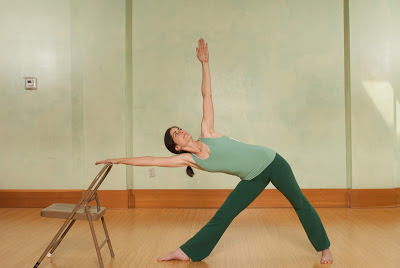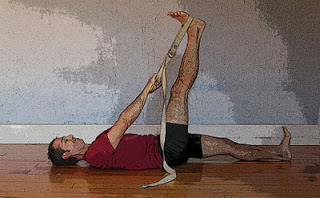“I think it’s possible that we should not look at stretching so much as a way to make muscles longer, but instead view it as a way to make muscles stronger over a greater range of motion.” —James Speck
That’s why years ago I was excited to learn from Baxter’s post Friday Q&A: How to Stretch that even yoga’s passive stretching poses (Reclined Leg Stretch, for example) are strengthening. Of course, I just had to look into it further because that’s me for you—I always want to the why and the how as well as the what. And ultimately I found out that the way we typically think about “stretching” as a separate form of exercise from “strengthening” doesn’t really make sense. In Stretching Is Really A Form of Strengthening, Physical therapist James Speck gives the following three reasons why stretching and strengthening can be considered the “same activity”:
- “Similar active and passive tensile forces are present in both stretching and strengthening exercises
- The body’s response to stretching and strengthening is similar in terms of the mechanical activation of pathways that promote muscle growth
- Preliminary evidence suggests that regular stretching is able to promote muscle hypertrophy and muscular strength”
He is saying here that stretching alone has been found to produce changes in muscle size and strength similar to what is typically seen with strengthening exercises. Peck cites two studies to support this claim. In Effect of hamstring stretching on hamstring muscle performance, fifteen days of static hamstring stretching was found to result in an increase in “peak isokinetic torque” generated by the muscles. And in Chronic Static Stretching Improves Exercise Performance, a 10-week stretching program was found not only to have increased flexibility, but also led to significant improvements in strength, muscular endurance, and performance in jumping and sprinting drills. Those in the control group saw no improvements in these areas.
- result in muscle hypertrophy
- stimulate the expression of growth factors
- impart similar tensile forces on muscles
- lead to increased muscular strength
When we pull on a muscle during a stretch, the muscle actively, as well as passively, resists or pulls back. So the “tensile forces” generated from stretching may be very similar to the “mechanical stress” caused by strengthening exercises. Speck says that based on these findings, “it could be argued that passive stretching is very similar to low-resistance strength training exercise.”
Follow Yoga for Healthy Aging on Facebook ° To order Yoga for Healthy Aging: A Guide to Lifelong Well-Being, go to Amazon, Shambhala, Indie Bound or your local bookstore.




